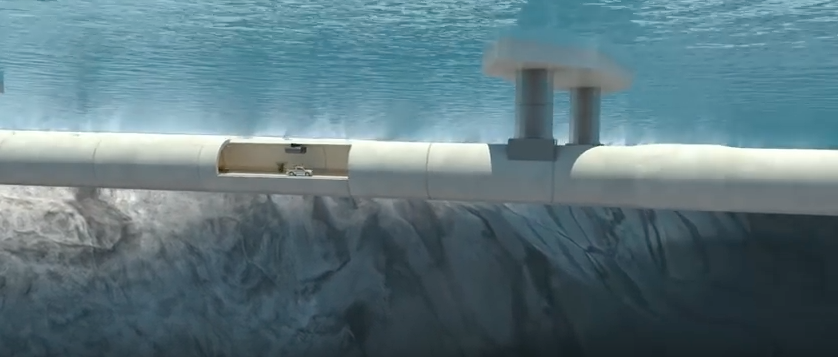A floating tunnel under Sognefjord could withstand an explosion
Concrete can tolerate much more force that previously believed, which could open the door to a new kind of road structure: a floating tunnel.
The E39 is a nearly 1100-km long coastal road that crosses seven major fjords by use of ferries. Norwegian authorities are working to improve the road by eliminating ferry crossings, which in addition to being costly, mean that drivers have to wait for ferries if they don’t arrive at the crossing at exactly the right time.
The biggest hurdle to this improved coastal road is found at Sognefjord, Norway’s longest and deepest fjord. At its mouth, the fjord is 3.7 km wide and 1300 metres deep. Building a conventional suspension bridge would require a structure that would be double the length of the existing record holder and would be three times the length of the Golden Gate Bridge in San Francisco. To hold the suspension bridge, the two towers at either end would have to be 450 metres high, or 150 metres taller than the Eiffel Tower.
But a series of experiments from the Norwegian University of Science and Technology’s (NTNU) Centre for Advanced Structural Analysis, or CASA, could pave the way for an entirely new type of water crossing: submerged floating tunnels.

Martin Kristoffersen is one of several researchers who is investigating the options for building a ferry-free E39 route from Kristiansand to Trondheim. Photo: Albert H. Collett, SFI CASA, NTNU
Experiments in a shock tube at CASA’s research laboratories show that concrete can tolerate much more pressure than previously thought.
(The story continues under the video.)
“We conducted the first experiments using five-centimetre-thick, unreinforced concrete plates. They were exposed to a seven bar pressure wave. We chose this pressure because we found it in the standard specification texts published by the Norwegian Public Roads Administration. To our surprise, very little happened,” says postdoctoral fellow Martin Kristoffersen, in NTNU’s Department of Structural Engineering.
He is one of the numerous researchers who is investigating the options for creating the ferry-free route along Norway’s coastal highway E39, from Kristiansand to Trondheim. Kristoffersen thinks the probability of soon seeing the world’s first submerged floating tunnel, also known as a tube bridge, is growing.
Very good margin
The NTNU researcher has one year left of his three-year project. The mission is to find out what happens when a tunnel bridge is exposed to an internal explosion.
The findings to date will soon be presented in a peer-reviewed professional journal. They are based on a large number of experiments using varying pressure waves in the shock tube.
(The article continues under the video.)
The preliminary conclusion is that a tube bridge will be able to withstand most likely explosion scenarios by a good margin, including tanker accidents like the recent one in the Oslo fjord tunnel.
The big difference between the five-centimetre-thick plate in the first experiment and the final dimensions is worth noting.
The tunnel being considered will have walls that are between 80 and 100 centimetres thick – in other words, 15 to 20 times as thick as in the first experiment – and reinforced. Even the car bomb that Anders Behring Breivik set off in the government quarter would have problems. That bomb had an explosive force equivalent to 700 kilos of TNT.
Repeatable loads
Steel, aluminium and glass have been tested using strong pressure waves since the opening of NTNU’s NOK 6 million shock tube in 2014. Now the same tests are happening with concrete.
Why?
“It’s been a win-win situation. For one thing, we’ve been able to test the tube on a new material. Also, the tube is unique when it comes to applying repeatable loads under controlled conditions. It’s proven extremely useful for gaining a better understanding of how the concrete handles the stresses,” says Martin Kristoffersen.
The tube can tolerate quite a bit. The pressure chamber at one end can build the pressure up to 170 bars. This corresponds to the pressure at a sea depth of 1.7 kilometres. In practice, most experiments take place at much lower pressure.
Kristoffersen actually holds the record so far, with 80 bars. The level was still 30 bars when the pressure wave reached the test plate at the other end of the 20-metre long pipe. That was more than the five-centimetre-thick concrete plate could withstand.




